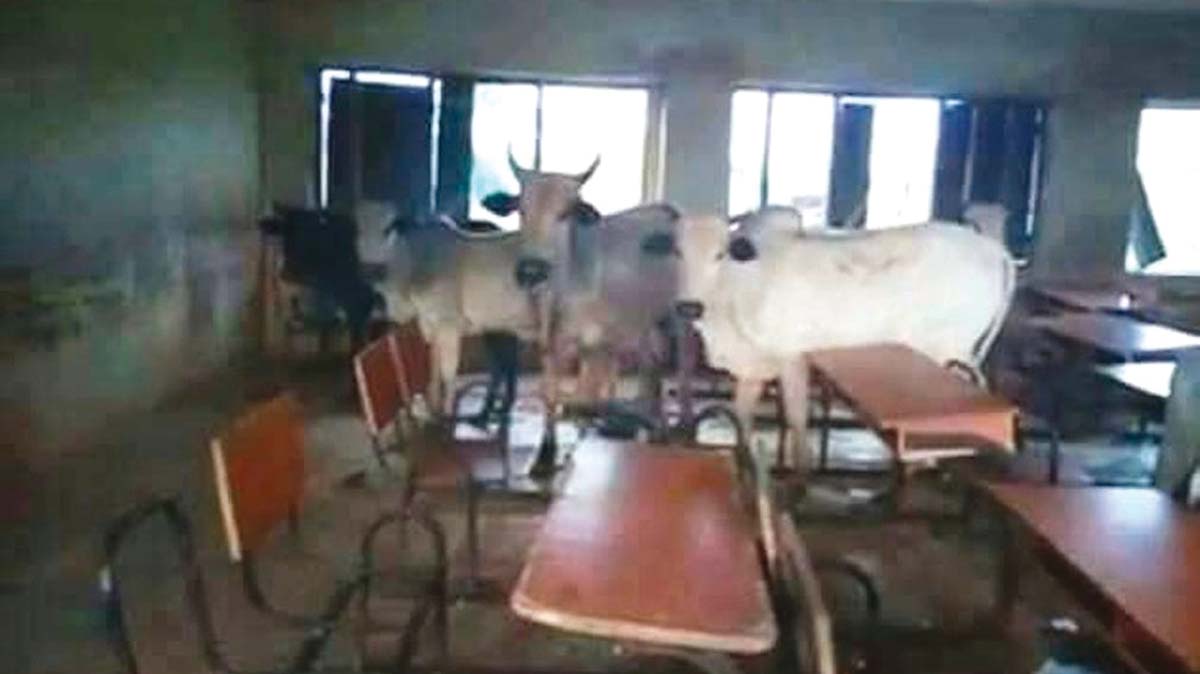In a lecture titled “Energizing Agriculture through Gross Sectorial Linkages with the oil and Gas Industry” at a convocation ceremony of the Federal University of Agriculture, Makurdi, former Group Managing Director, GMD of the NNPC Funsho Kukpolokun, said the NNPC would be relying on Cassava and palm oil to service these plants. He also said that Nigeria would earn $150million every year from 2017 when the six bio-fuel plants spread across Nigeria would swing into full-scale production.
By Bob MajiriOghene Etemiku
In 2008 when the climate change debate took center stage, the discovery of a plant known as Jathropha as an alternative to fossil fuels produced ripples of excitement within the global environment community.
What made the discovery of the plant even more spectacular was that it grew easily in Africa, Asia and the Americas.
The plant was used as a natural hedge or fence in communities that cannot afford a fence. Jathropha could grow on very poor soil and everyone ignored it because its leaves and seeds are poisonous.
But that changed when it was discovered that the poisonous seeds contained oil that could be used for soap, used in bush lamps, and converted to diesel oil for running machines.
Oil from Jathropha seed had the same power as that from sugar cane. What made the Jathropha allure very robust was that at that time, the price of oil had hit the roof and warnings were rife about the irreversible consequences of global warming.
The world was already at a tipping point of climate change. Therefore, a lot of investors began to invest in the plant.
Acres and acres of it were planted, and a president of a certain African country used to go from village to village encouraging his people to plant more and more Jathropha.
In 2008 in Berlin, Germany, I happened to have witnessed one such demonstration of the potentials of Jathropha.
Unfortunately for everyone however, a strong and seasonable campaign against massive cultivation of Jathropha took root.
Initially, the thinking was that the plant could survive even in the worst of conditions such as droughts. But it was discovered much later that even though it could survive on poor soil and can survive long periods without rain, it would not produce seeds unless it grows on fertile ground.
That was why people began to argue that planting Jathropha on good soil took up much of the fertile lands needed for food crops.
It was then discovered that the drive to find a replacement for fossil fuels would take our dinner right out of our tables.
Local people in East Africa still continue to use Jathropha for soap making and oil for their bush lamps. And in certain labs in Europe, research is ongoing to find other plants like Jathropha that can yield their food as well as their oil.
Therefore, I was pleasantly surprised when I visited the NNPC website recently to find that the corporation has had a renewable energy policy in place since 2007.
The NNPC was in the news – for the first time in decades, it had thrown its books open for public scrutiny, and for the first time as well, the public gained some insight into its gains and losses as well.
But the most important reason why I was at the NNPC site was a report on the Blueprint newspaper of Tuesday March 14 2014, where then Group Managing Director of the NNPC Engineer Andrew Yakubu had said that approximately one year from now that the NNPC is to get on stream Nigeria’s first bio-fuels plant by 2017.
I eventually found out that it was a presidential directive that led the NNPC to create a Renewable Energy Department, RED in 2005 with the plan to ‘integrate the energy and agricultural needs of the country, reduce CO2 emissions’.
“The Renewable Energy Division of the NNPC has completed seven site specific feasibility studies that include two oil palms to bio-diesel projects in Ikom and Calaro, Cross River state, two sugar cane farms to fuel ethanol projects in Agasha, Guma and Buruku in Benue state, one sugarcane farm to fuel ethanol project in Kupto Maleri, Gombe state, one cassava to fuel ethanol project in Okeluse in Ondo state and one cassava farm to fuel ethanol project in Ebenebe in Anambra state’, Yakubu said through his representative Mr. Alfred Enjugu in 2014.
But several issues immediately jut out of the noble plan by the NNPC’s ‘broad objectives’ of producing Green Gasoline in 2017 and as outlined on its site.
One of them is a teeny-weeny detail that immediately exposes the readiness of the NNPC bio fuel production plan.
In the year 2015 AD, the NNPC has an ‘upcoming events’ calendar of bio-fuel events that will take place in 2016. These bio-fuel conferences take place in Europe every month of the year, and this means that after the ‘upcoming event’ calendar on the NNPC website, over 48 of these meeting have taken place.
Now, whether or not NNPC officials in charge of the Green Gasoline project have been attending some of them, we cannot tell.
But at those meetings, members of the EU collect, analyze and disseminate information regarding the production of biofuels.
They also study problems that confront the bio-diesel industry and suggest solutions at economic, political, legal, institutional and technical levels.
The predisposition of the officials who run our energy potentials do not end at the ability of the NNPC to be so far away from global events that are currently shaping the future of bio-fuel production.
It was while reading through the inaugural dissertation of a Bangladeshi doctoral student at the University of Bonn, titled Politics of Climate Change: Global Power Shift and New Identities that I came to this conclusion.
Countries that have consistently attended and made contributions to post-Kyoto deliberations have overthrown mainstream hegemony and philosophy through the formation of negotiation blocs like the BRICS – Brazil, Russia, India, China and South Africa.
Even though positions that are usually canvassed at these meetings represent the interests of these groups, South Africa emerges as the voice of Africa, and takes decisions at these conferences on behalf of Nigeria.
Therefore, Nigerian bodies or institutions really keen on making an impact with renewable energy cannot afford to stay away from these melting pots of energy negotiations.
In addition to all of these, a bio-fuel argument taking place in Europe now resurrects the food-for-biofuel argument.
It is the Woof-for-biofuel spat. Bio-fuel producers prefer wood for bio-fuel because wood is less scarce compared to plants like Jathropha or oil.
It pollutes the atmosphere less, and even though actual wood is not being burnt to produce the trimmings and pellets for bio-fuel, the worry is that the time would come when nearly all the trees in the US would have been cut to fuel European need for biofuel.
In a lecture titled “Energizing Agriculture through Gross Sectorial Linkages with the oil and Gas Industry” at a convocation ceremony of the Federal University of Agriculture, Makurdi, former Group Managing Director, GMD of the NNPC Funsho Kukpolokun, said the NNPC would be relying on Cassava and palm oil to service these plants.
He also said that Nigeria would earn $150million every year from 2017 when the six bio-fuel plants spread across Nigeria would swing into full-scale production.
According to Kukpolokun, the NNPC has already obtained a 70,000 euro grant from Renewable Energy, Energy Efficiency Partnership (REEEP) Germany to support detailed ‘feasibility study’.
Most of the crops – cassava, sugar cane, palm oil, millet and corn – which the NNPC cited on its website that it intends to use in its Agasha Guma biofuel plant in Benue State are Nigerian staples.
Take Cassava as an example – it is a staple food to over 700 million people in Africa and a vital cash crop for thousands and thousands of farmers in Nigeria.
Research shows that cassava contributes over 40% of agricultural GDP in Nigeria, and even though we produce about 40,000 tons of cassava annually, the national demand for cassava hovers around 350,000 tons. This means that about 99% of the annual production of cassava in Nigeria ends up as lunch and dinner for most Nigerian homes.
What the people in Europe have come up with for their extra energy needs is a program of combined heat and power, CHP.
They don’t rely on only one source of power. To create other sources like biofuel, they regulate what food and what forests they need to cut down for their alternative energy needs.
Instead of cutting down their trees for biofuel, they would rather import trimmings and wood pellets. Instead of using food for fuel, they would rather use gas from biomass – human and animal waste mixed with genetically modified organisms – rice and wheat aka GMOs – which people in Europe would not eat.
At our present level of growth, we may not be able to organize a CHP program like what obtains in Europe.
But what we can do is make sure we don’t take away food from our tables for alternative energy or simply because we want to make extra income from biofuel. Nigeria seriously needs to put on its thinking Stetson, and come up with creative ways to earn extra cash.
Instead of sharing monies from crude oil sales monthly, Nigeria must invest these monies in other sources of power (and there are many of them today that would not compete with our food and forests).
Bob MajiriOghene Etemiku writes from ANEEJ, Benin City,
majirioghene@aneej.org








Don’t take the food away…!
Issues With Nigeria’s Green Gasoline Plan | https://t.co/nff9OSYLuJ https://t.co/d3T7LutF4w via @@alltimepost